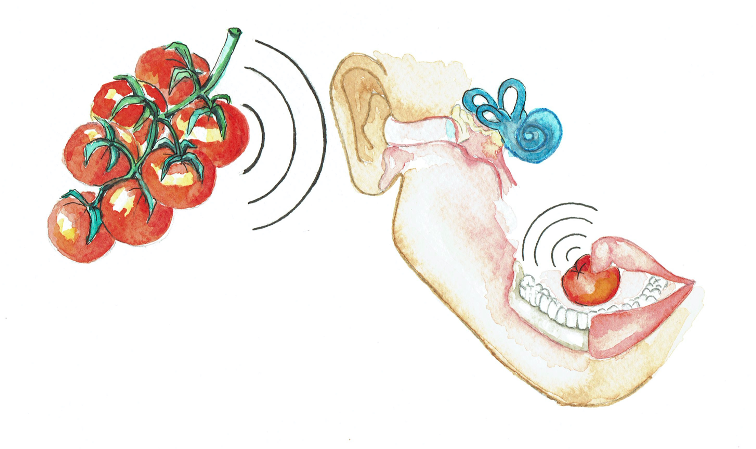Accepted abstract - Creative Tastebuds Symposium 2021
The sound of meals - new food habits
Innovation showcase
By Simon Milwertz Phillipsen
Often people are aware about the sounds in the surroundings. Music is playing often in restaurants. There is a lot of sound, or noise, in the area from plates, cars, doors, wind or waves. And people create voices, both the people around and the one with whom you are having a conversation.
But when you eat, you are also making sound. When your teeth are crushing some foods there is made sound. We can call it the rhythm of chewing. When we change food habits, e.g. from meat to more vegetables the aesthetic awareness of eating will change.
Plants are exceptional at making different variety in sounds. When the cheek tooths is biting in a plant cell it is like a small explosion. Course plant cells are a little like water balloons. It is some kind of liquid with a cell wall around. When the flat teeth in the back of your mouth, bites in for an example an apple. Then it is like when you step on a water balloon, it explodes. This explosion is making a sound in your mouth and comes to the inner ear. When this sound is frequently and rapidly it is making a rhythm. The more you thew, the more the food is finely divided, and therefore the tones are changing. The food is changing character in size and is mixed with saliva and therefore it is giving off a changed tone. So, food is becoming a little melody while we eat. Not a big symphony but a little melody.
Vegetable, fruit, leaves, roots and stalks all have different cells, therefore different sounds. There is difference in thickness of cell walls, number of cell walls and in the pressure of water (juices) inside. So, there are difference in the sounds and tones in different plants and plant parts. This great variety is creating multiple sounds and bring music into your everyday meal. And this great variety is what we need for more biodiversity.
The soil, insects, microbes, fish, animals and humans need greater biodiversity. Hopefully the awareness of how food taste, smell, looks, feeling and specially sound create a bigger demand for divers’ plants in the meal. So, it’s the earth that decides what should be eaten instead of the humans. Be course we can enjoy this diversity.
The talk will be about flavor and biodiversity with an exercise that sharpens the awareness in sense stimulus. This can make the audience reflect on what change of food habits means to the aesthetic experience of eating.
